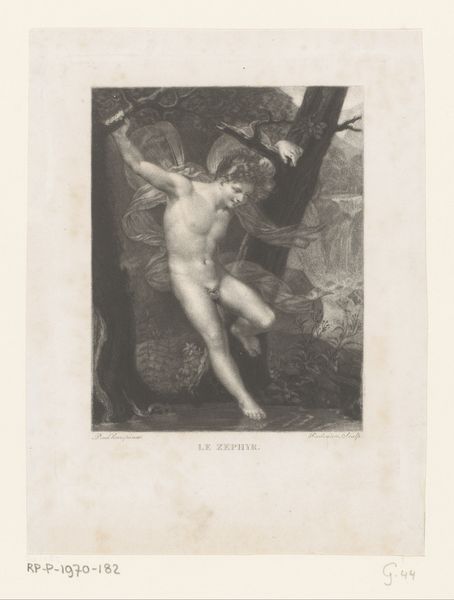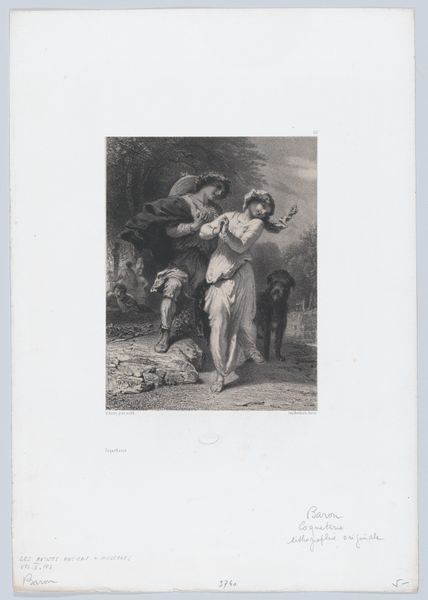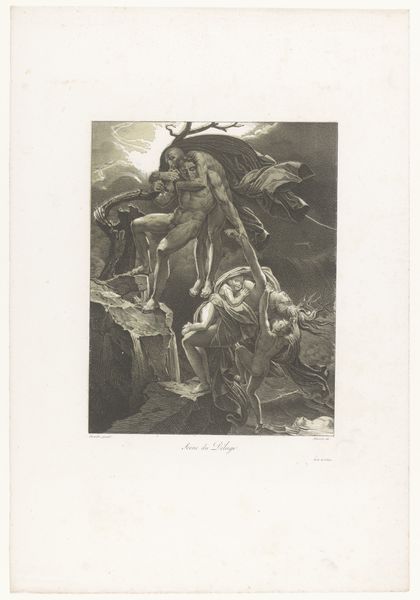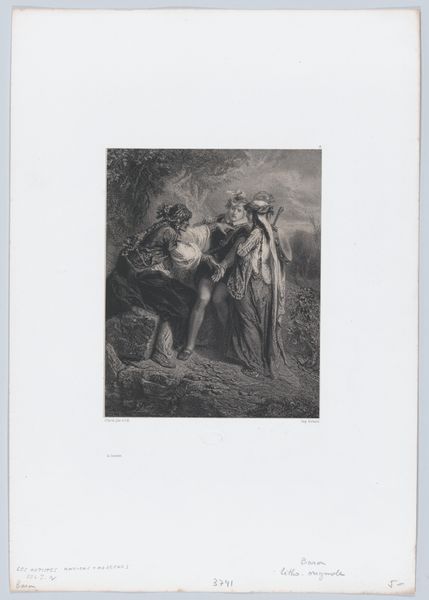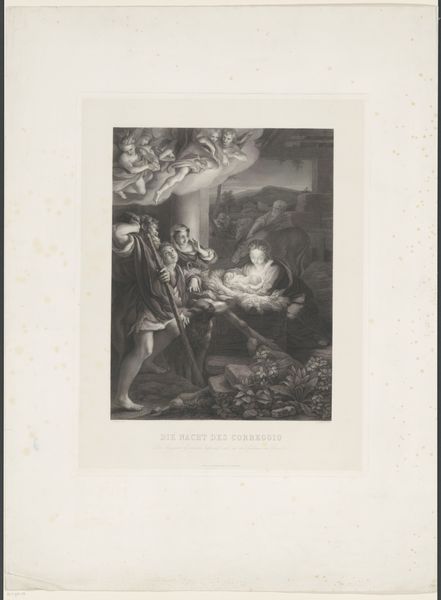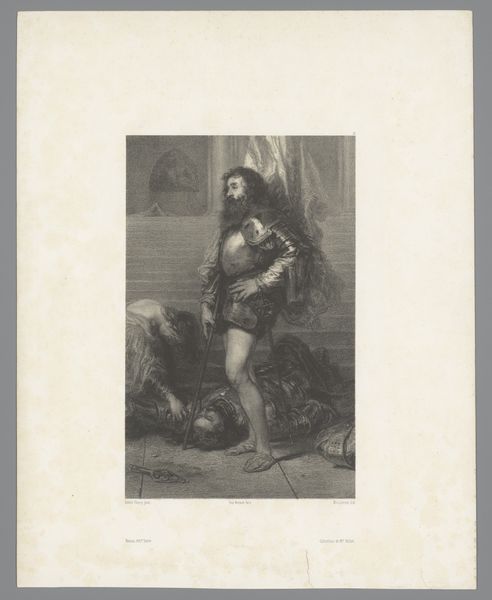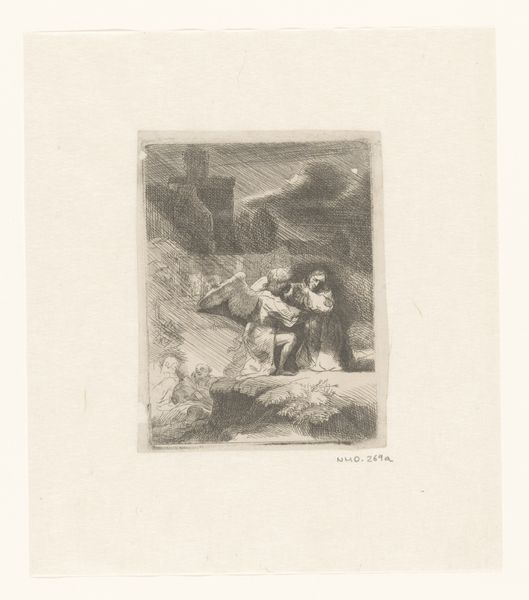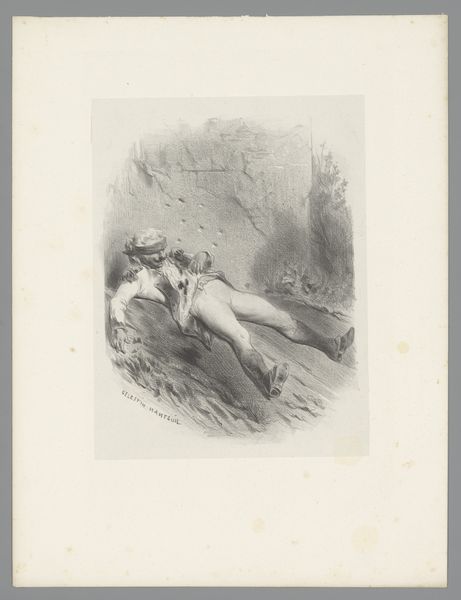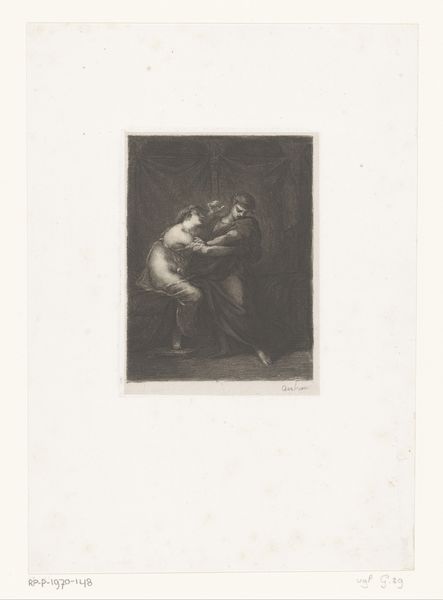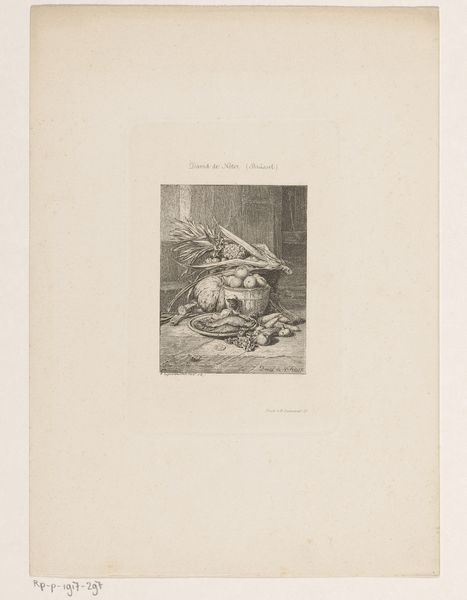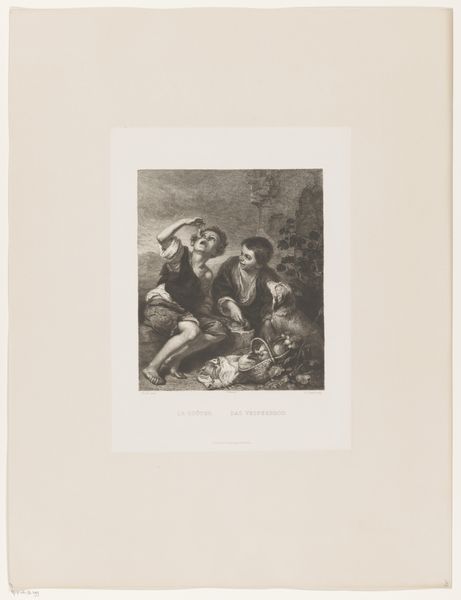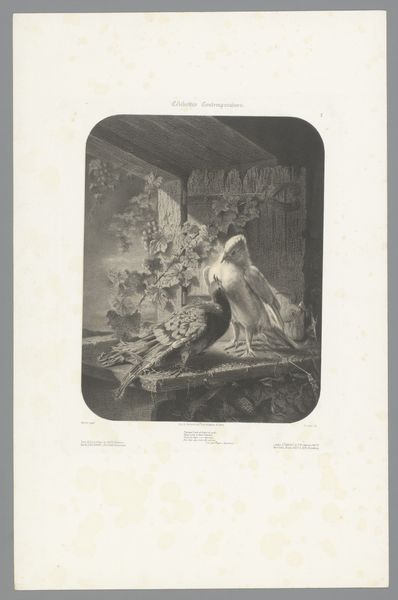
Maria Magdalena met haar hoofd rustend op een rotsblok 1848 - 1862
0:00
0:00
Dimensions: height 471 mm, width 334 mm
Copyright: Rijks Museum: Open Domain
Curator: Here, we see Adolphe Mouilleron's "Maria Magdalena met haar hoofd rustend op een rotsblok", created between 1848 and 1862. The piece is an engraving currently held in the Rijksmuseum. Editor: What a striking study in light and shadow! The chiaroscuro is used very effectively to heighten the emotional impact. It's very melancholic and dramatic, immediately drawing me to the lone figure. Curator: Indeed. The print speaks to a specific construction of piety popular in the 19th century. We have the historical Magdalene, presented as a penitent recluse. Note how the composition directs our gaze—her bare shoulder turned towards us almost inviting our gaze but then pulling away into the depths of a cave. Editor: Yes, that turn is vital, deflecting what might have become mere spectacle. The body is subtly modeled. And her pose! The lines created by her prone form, the rock, and the angular cross introduce a subtle sense of discordance, of struggle even within repose. Curator: And, of course, the skull and the book amplify this understanding of contemplation and repentance that Mouilleron aims to elicit. The symbol of mortality contrasts with her beauty; these juxtapositions were central to Academic Romanticism. Think of the way societal attitudes toward female sinners were shifting. There's almost a sense of absolution. Editor: The visual cues around her speak to various modes of self-reflection, particularly around redemption and death. Formally, it's compelling how the curve of her body echoes and opposes the cavern mouth simultaneously, creating tension between confinement and opening. Curator: It certainly prompts us to consider how institutions shaped the depiction—and, by extension, the social understanding—of religious figures during this period. Art served a didactic function within very specific political and moral contexts. Editor: So, this wasn’t merely about portraying a biblical figure, but also about reinforcing—or perhaps subtly challenging—contemporary social norms around female identity and religious devotion. That push-pull makes it really intriguing to consider formal qualities within the artwork, no doubt a lasting commentary!
Comments
No comments
Be the first to comment and join the conversation on the ultimate creative platform.
